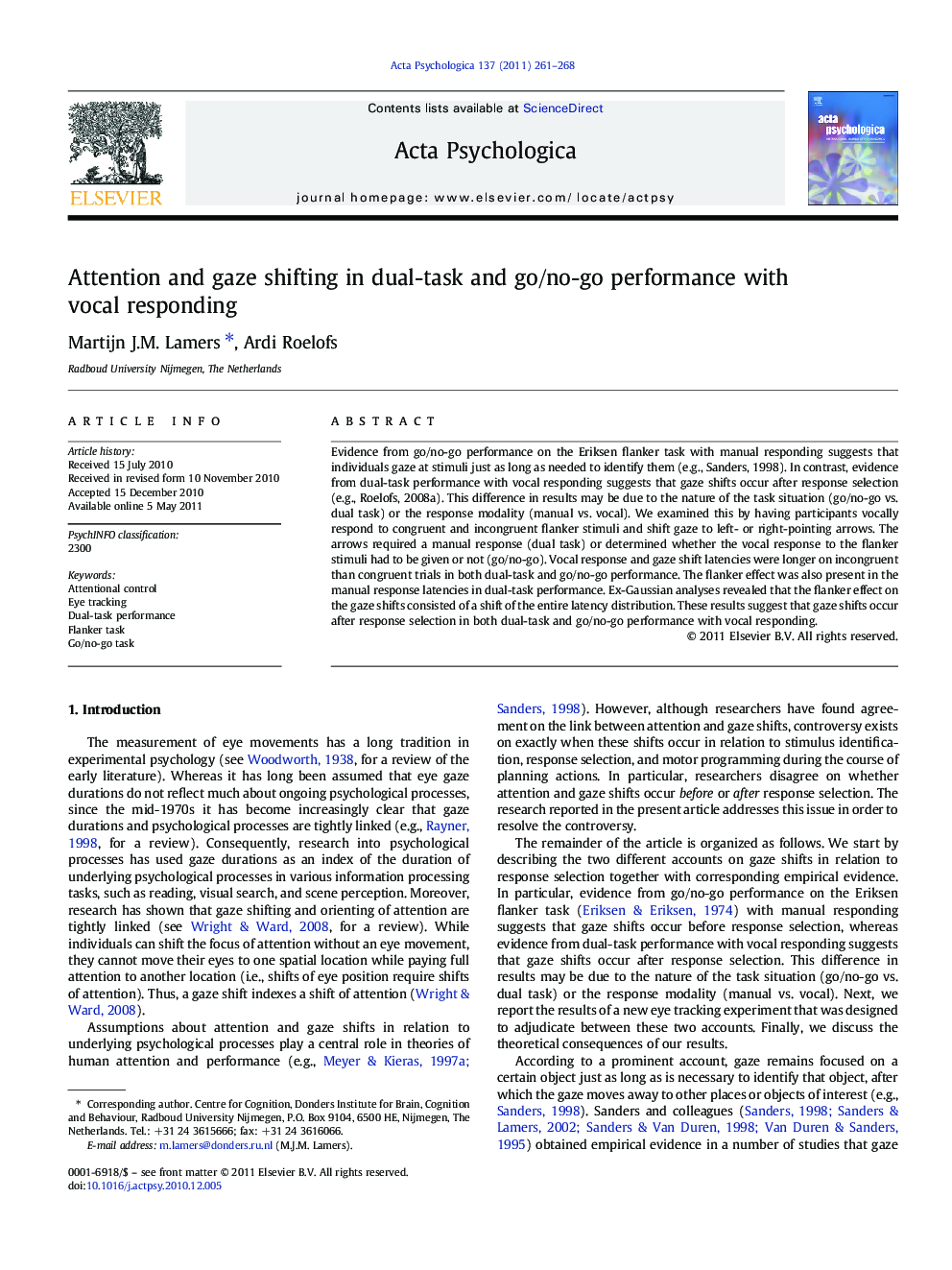| Article ID | Journal | Published Year | Pages | File Type |
|---|---|---|---|---|
| 920026 | Acta Psychologica | 2011 | 8 Pages |
Evidence from go/no-go performance on the Eriksen flanker task with manual responding suggests that individuals gaze at stimuli just as long as needed to identify them (e.g., Sanders, 1998). In contrast, evidence from dual-task performance with vocal responding suggests that gaze shifts occur after response selection (e.g., Roelofs, 2008a). This difference in results may be due to the nature of the task situation (go/no-go vs. dual task) or the response modality (manual vs. vocal). We examined this by having participants vocally respond to congruent and incongruent flanker stimuli and shift gaze to left- or right-pointing arrows. The arrows required a manual response (dual task) or determined whether the vocal response to the flanker stimuli had to be given or not (go/no-go). Vocal response and gaze shift latencies were longer on incongruent than congruent trials in both dual-task and go/no-go performance. The flanker effect was also present in the manual response latencies in dual-task performance. Ex-Gaussian analyses revealed that the flanker effect on the gaze shifts consisted of a shift of the entire latency distribution. These results suggest that gaze shifts occur after response selection in both dual-task and go/no-go performance with vocal responding.
